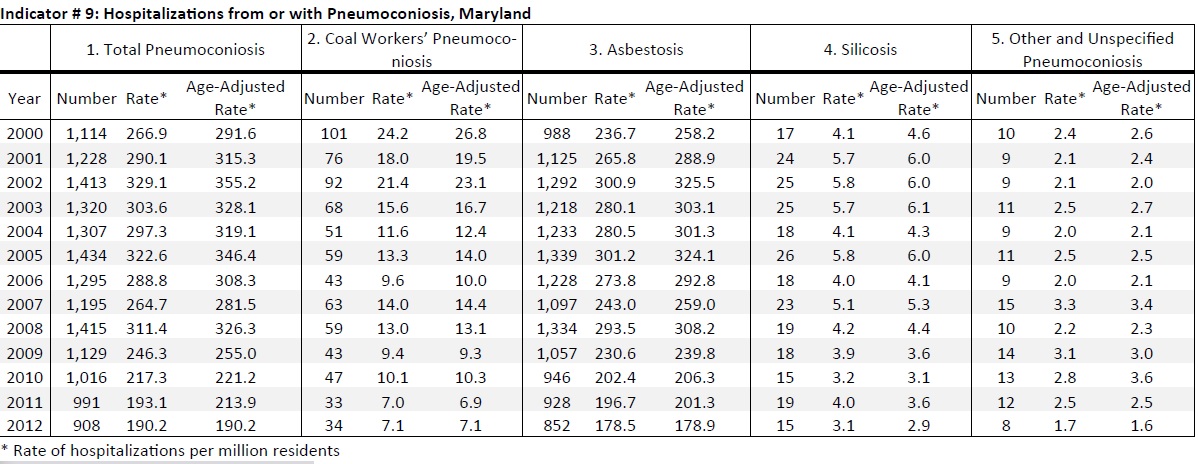Indicator #9: Pneumoconiosis Hospitalizations

Pneumoconiosis is a term for a class of non-malignant lung diseases caused by the inhalation of mineral dust, nearly always in occupational settings. Most cases of pneumoconiosis develop only after many years of cumulative exposure; thus they are usually diagnosed in older individuals, often long after the onset of exposure. These diseases are incurable and may ultimately result in death.
Pneumoconiosis includes: silicosis, asbestosis, coal workers’ pneumoconiosis (CWP), and, less commonly, pneumoconiosis due to a variety of other mineral dusts, including talc, aluminum, bauxite, and graphite. Some other dust-related lung diseases are sometimes grouped with "pneumoconiosis," even though they are caused by occupational exposure to organic (e.g., cotton) dust. Individuals with certain kinds of pneumoconiosis are at increased risk of other diseases, including cancer, tuberculosis, autoimmune conditions, and chronic renal failure.
Select Measure to View Graph
Table

More About this Indicator
Why is this indicator important?
Pneumoconiosis frequency varies geographically being largely determined by local industrial activities and migration of affected individuals. Control of occupational dust exposure is the single most effective means of preventing pneumoconiosis. Tracking of pneumoconiosis is essential for measuring progress towards elimination of the disease, as well as for targeting prevention and disease management programs.
Data Source for this Indicator
Maryland Hospital Discharge Data (number of work-related hospitalizations); U.S. Census Bureau (population statistics to calculate rates).
U.S. data and information about this indicator obtained from http://www.cste.org/general/custom.asp?page=OHIndicators.
Limitation of Indicator
The number of diagnoses listed on discharge summaries may vary by regional practice patterns and by the persons completing the summaries. Practice patterns and payment mechanisms may affect decisions by health care providers to hospitalize patients, to diagnose pneumoconiosis, and/or to list pneumoconiosis as a discharge diagnosis. Residents of one state may be hospitalized in another state and not be reflected in his/her state’s inpatient hospitalization data. Until inpatient hospital discharge data is available in all states, aggregation of state data to produce nationwide estimates will be incomplete.

